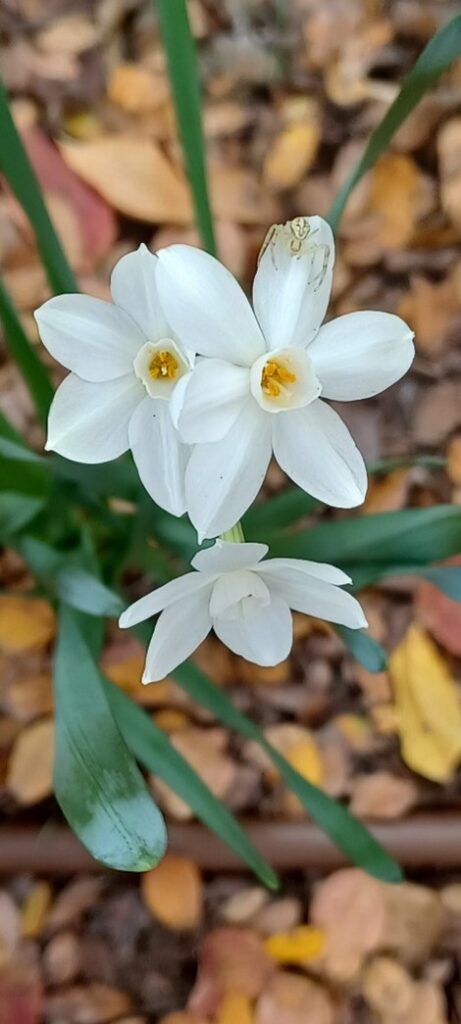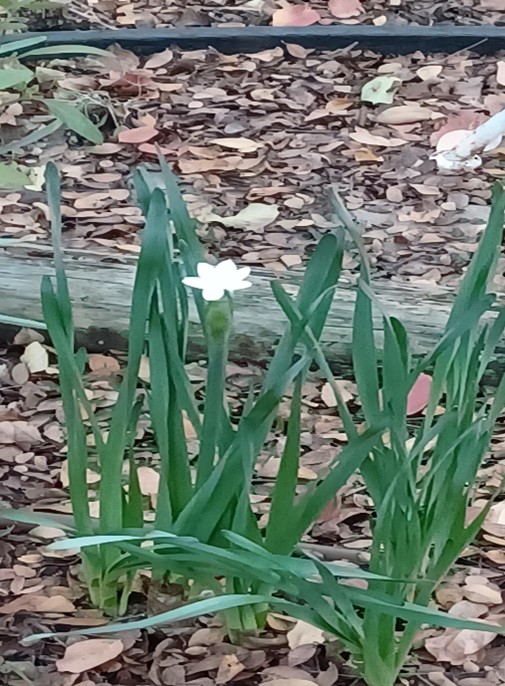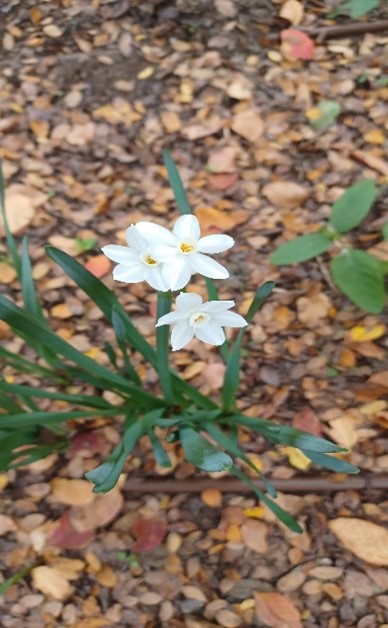
At this time of year, when most plants are dormant and the leaves have fallen from the trees, there is one plant that begins to flower, bringing brightness to an otherwise dreary overcast winter day.
The paperwhites arrive during this season in San Antonio. These beautiful flowers are just starting to bloom in my garden sporadically, and I will use them as cut flowers to bring inside and put in a small vase. Paperwhites are the last flowers to bloom every year, and they make us look forward with hope and sunny expectations for the upcoming spring growing season.
Paperwhite bulbs are native to the Mediterranean region, and prefer warm, sunny conditions. In most parts of the United States, the weather is too cold for this narcissus variety to thrive outdoors, especially during the winter months. Although I have read that they do best in 9-11 hardiness zones and less frequently in zone 8 (San Antonio’s region), I still decided to put them in my garden as an experiment. My sister who lives in the White Rock Lake area near Dallas has had success with them and it gets even colder up there.

Two years ago, during the holidays, I bought some Ziva Paperwhite bulbs (Narcissus papyraceous) to force their bloom inside my house. They bloomed beautifully and gave off a strong perfume aroma which I love! Instead of discarding the bulbs that year, I put them directly into my garden in a bed under a cedar elm tree that had lost its leaves, so that the plants would get some sun during the day in the wintertime to grow.
I waited until the leaves were completely withered on the plant and then placed the bulbs 6 inches deep in the soil. I kept the soil evenly-moist with a dripper system during their first growing season and allowed the raised bed to dry out during January and February, with only rain for moisture.
I have had success with the paperwhites and they are now coming up at various stages of growth. Some are blooming with beautiful little white clusters of flowers and are so cute! These are miniature daffodils that are also in the Narcissus family. The blooms are not as numerous nor is the plant as tall as when I had them in the house, but they are still beautiful with a consistent bloom and fragrance.
I have read that paperwhites require less care than other daffodils and return every year. If a plant is easier to grow and flower, I want it in my garden! I did put slow-release fertilizer in the bed for the bulbs when I planted them because I thought it would help in their first year of growth, but I haven’t added it since then. The plants receive all the cedar elm leaves that drop, but since they are low maintenance, they really probably don’t need the fertilizer.

There are many varieties of paperwhites on the market, but I have read that the Ziva variety has the most fragrance, so I purchased these particular bulbs. They only bloom for a couple of weeks and need very little care or sunshine, with dappled sunlight being enough outside or even just bright light inside. That is why they are such a good flower bulb to force indoors where there is minimal light. You can plant them in your garden after they flower or save them for next year to bloom again in your dining room for the holidays.
If you have forced bulbs indoors this year, don’t throw them away. You can save them for next year to enjoy those flowers once again. After the paperwhites have stopped blooming, allow them to remain in a bright location in your house until their leaves have completely turned brown. This step is necessary because it provides the energy for the bulb to produce future blooms the following year. We don’t cut them back; we let them turn brown on their own.
You can fertilize the plants with 1 tablespoon of bulb food, store them in their pot in a cool spot in your garage, and then stop watering them, which is similar to Amaryllis winter care. About four weeks before you want them to bloom again inside, you can move them to a warmer, brighter location in your house and start watering them again, keeping them evenly moist but not overly so because excessive water will cause them to rot.
Happy gardening and enjoy your flower-filled holidays!
Photos by Author
Published: January 2023
